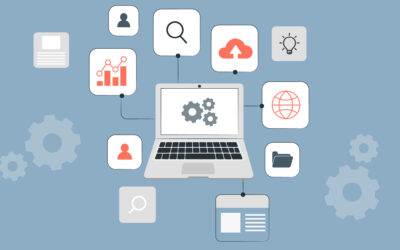Imagine this scenario: You’ve got a new product ready to be launched. All systems are in place. But you realize (much to your horror) that your teams find a major loophole while using the product–the software is lacking in core functionality. This is often an unfortunate (and fatal) outcome of not getting your requirements document right.
In this blog, we will decode everything you need to know about requirements documents–from what it is and what are its types to their importance and best practices to keep in mind while writing a product requirements document.
What Is a Requirements Document?
In absolute layman’s terms, a requirements document is a product requirements document that outlines all the requirements for a specific product. This document enables people to understand what a product must do. Some requirements documents examples would be a Business Requirements Document, a Functional Requirements Document, a Market Requirements Document, etc. (more on this later).
So, What Is the Importance of Requirements Documents?
A product requirements document is the foundation on which you can build a great product. Here are a few characteristics and benefits of a requirements document:
Core Characteristics of the Requirements Document
Entails research + comprehensive strategy + in-depth roadmap
The Benefit to the User
Leads to an accurate and well-defined requirements document, which in turn, provides better direction for the design, development, QA, and vendor teams.
Core Characteristics
Collaborative process, which requires team members to understand, capture, and agree upon the requirements
Benefit to the User
Helps communicate, define, and understand the customer’s needs and pain-points, thereby building a more relevant product. Also promotes greater alignment and consensus among stakeholders.
Core Characteristics
Promotes informed decision-making and better preparation with an accurate basis for cost estimates and timelines
Benefit to the User
Helps prevent the chances of a product failure
Core Characteristics
The plan is well-defined and detailed
Benefit to the User
Helps your design and code teams to work with greater efficiency and productivity, which leads to lesser chances of rework as well as scope creep
What Should You Include in Requirements Documents?
In this section, we will cover how to document requirements and the key components you must include in the same. Factor in the following tips when writing a requirements document:
- Ensure that your sentences are direct, explicit, short, and simple. In other words, avoid ambiguity at all costs and say no to long, rambling sentences.
- Use an easy-to-understand vocabulary so that even non-technical readers can understand it.
- Always identify the type of user who will find the requirement useful.
- Laser-focus on stating the results clearly and concisely. Every requirement should have a single desired end-result.
- Make sure that every requirement is verifiable.
- Avoid writing multiple requirements and using plenty of conjunctions such as ‘with,’ ‘and,’ ‘or,’ etc. Additionally, you must prevent using let-outs such as ‘unless,’ ‘except,’ ‘when,’ and so on to avoid misleading the readers.
- Your focus should not be on designing the system. Instead, focus on outlining your product’s purpose. So, avoid terms such as names of components, materials, software objects, database fields, and more.
- Avoid wishful thinking and avoid using terms such as ‘might,’ ‘ought,’ etc.
- Use a robust requirements document tool to capture important components. The tool will also allow you to:
- Create a streamlined requirements-gathering process that meets your development environment requirements and your project needs
- Match your documentation type (and approach) with the project scope, workflow, and resource constraints
- Leverage useful features such as sharing user stories, engaging in a quick sprint, engaging key stakeholders early, and more
- Prioritize the development and drive cross-department collaboration across the technical, sales, and other teams
The takeaway: A well-defined requirements document is one that includes the following components:
- Project overview and scope, which includes the vision, objectives, and context
- What the new/updated product must do, and scope of the solution
- What the user’s needs and expectations entail
- Required stakeholders
- Business requirements
- The high-level constraints that can impact deployment (think: project schedule and budget)
- Quality control measures
Types of Requirements Documents
As you might have guessed, there are different types of requirements documents that differ in terms of capabilities, functions, and characteristics. These are:
1. Business Requirements Document (BRD)
Key Characteristics
- Is the first stage in a product life cycle
- Is prepared by a project manager/business analyst
- Outlines the problems that a product/service/system will help solve in a single page (often with bullet points)
- Logically lists high-level business requirements with respect to the customers’ needs
- Features the product’s end-goals for the development team
Its components include:
- Outline of project requirements
- Project objectives
- A ‘needs’ statement talking about why the project is needed (and how it will be achieved)
- Financial details
- Functional features
- A SWOT analysis of the business and the role the project plays in it
- Resource needs
- Project schedule and deadlines
- Cost-benefit analysis
2. Functional Requirements Document (FRD)
- Talks about how a system/project will accomplish the requirements
- Can run into hundreds of pages
- Outlines the functionality of the process in detail
- Captures the needs of the system by way of services, tasks, or functions
- Does not define the specifications
- Includes screen mockups/wireframes to illustrate the system’s design
- Typically written by the business analyst/ systems analyst
3. Market Requirements Document (MRD)
Helps communicate details for a product release
Generally made by the product manager
Is written keeping the end-user in mind to understand what a product should do
Also outlines the non-functional requirements, focusing on the security, reliability, and scalability of the product
The key components include:
- Product objectives
- Key features
- Assumptions, limitations, and dependencies
- User experience (UX) flow + designing notes
- System + environment requirements
4. Product Requirements Document (PRD)
- Helps communicate details for a product release
- Generally made by the product manager
- Is written keeping the end-user in mind to understand what a product should do
- Also outlines the non-functional requirements, focusing on the security, reliability, and scalability of the product
The key components include:
- Product objectives
- Key features
- Assumptions, limitations, and dependencies
- User experience (UX) flow + designing notes
- System + environment requirements
5. User Interface Requirements Document (UIRD)
- Details the look and feel of the system’s User Interface (UI)
- Generally written by the user interface design team
Defines the following factors:
– How the content will be demonstrated to the user
– What the user navigation will look like
– What kind of color codes must be used
– What kind of hints, tips, and suggestions must be showcased
– Shortcut keys
Also includes mockup screenshots/wireframes to allow users to know what the finished system will look like at the end
6. Technical Requirements Document (TRD)
- Comprises the software, hardware, and platform requirements of the product
- Generally written by the engineering team
- Entails requirements such as the programming language of the system and the processor speed required to run the system
- Also includes the limitations of the system and its performance
The key components include:
- Executive summary of the project (and the context)
- Assumptions and risk factors that may impact the project
- Functional + non-functional requirements
- References of supporting documents
7. Quality Requirements Document
- Outlines the diverse expectations of the customer with respect to the product quality
- Highlights different criteria, factors, and metrics that need to be met
- Focuses on core parameters such as reliability, usability, maintainability, consistency, availability, and customer experience
- Typically written by the project manager/business analyst
8. Software Requirements Document
- Outlines the features + intended behavior of a system
- Demonstrates the business’s understanding of the end user’s needs
- Lays down details relating to the functional and non-functional requirements
- Is generally written by the lead engineer of the project with a specific IT project in mind
The key components include:
- Product overview
- Proposed methods + procedures
- Summary of the existing system
- Design elements
- Security parameters
9. Customer Requirements Document
- Also known as a Client Requirement Document
- Often refers to a PRD but with a specific customer or client in mind
Wrapping Up
All things considered, view a requirements document as a compass that enables everyone to understand the project in great detail. You’ll be able to grasp insightful details such as where the project is headed, how long it will take to get it finished, and whether or not it’ll be successful. In summary, if you want to document and define everything that your product must do, you need to ace your requirements document and get started on the right note.
Xebrio for Writing Requirements Documents
Xebrio, a requirements management software, assists in the creation of requirements documents by offering a streamlined process for capturing and organizing requirements. This process promotes collaboration among team members and informed decision-making.
The software includes built-in ISO and IEEE compliant templates for capturing requirements, as well as the ability for users to create and save custom templates for future use. Users can also create user stories and associated requirements within text documents, while adding upstream and downstream requirements within the same document.
Additionally, Xebrio allows for the creation of parent folders, with user stories and documents as subfolders, allowing for the formation of hierarchies. The tool also helps to prevent ambiguity and ensure that requirements are clear, concise, and verifiable. It also facilitates the organization and prioritization of development and offers features such as user story sharing and early stakeholder engagement through approval workflow. Furthermore, Xebrio ensures that the requirements documents are accurate and comprehensive, resulting in a better final product.






0 Comments